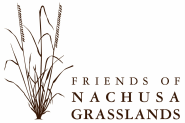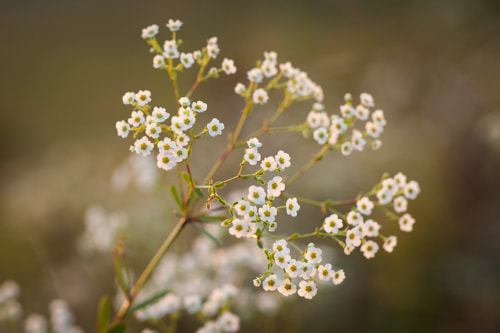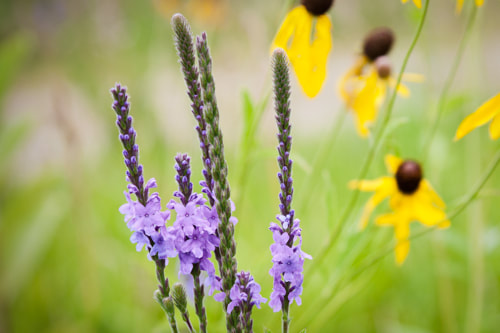Spurge Family (Euphorbiaceae)How can I recognize a member of the spurge family?
In North American all members of this family have milky juice and non-showy flower parts but with sometimes showy bracts. The reverse of so many other flowers where the petals are showy and the bracts are green. Cool stuff to know about spurges This is a very diverse family with about 300 genera and 7,500 species; there are even some cacti species. Also the castor bean plant of laxative fame and poinsettia are in this Euphorbiaceae family. flowering spurgeEuphorbia corollata
Deadly milk! The juice from this plant is milky and toxic to mammals including humans. Some animals have died from eating flowering spurge. You can find this plant not only at Nachusa but in every county in Illinois. Some plants uses Pollen and nectar from this plant attract various bees, wasps, flies, and butterflies. Other insects are able to feed on the sap. The seeds make great food for birds like the wild turkey, greater prairie chicken, bobwhite quail, mourning dove, and horned lark. Latin name origin Euphorbia is a reference to Euphorbus, who was the Greek doctor of King Juba II of Numida. Euphorbus used plants in this genus for their medicinal properties. Corollata means “like a corolla”, which are the petals of a flower as a group. |
Vervain Family (Verbenaceae)How can I recognize a member of the vervain family?
This family often has blooms in spikes and the slightly irregular flowers often have wavy-edged petals. Cool stuff to know about vervains Most of the North American members of this family are in the far south. Nachusa Grasslands has four Verbena species. hoary vervainVerbena stricta
An exceptionally hairy plant! Hoary means hairy. This plant is distinguished from similar species by white hair covering the leaves, stems, and flowers. Some plants uses to animals or humans The blue and purple flowers attract several varieties of bees including honey bees, bumble bees, and calliopsis bees at Nachusa. Butterflies also like to feed on the nectar. Red-legged and pasture grasshoppers enjoy the leaves. The seeds make great snacks for birds like the cardinal, slate-colored junco, and field sparrow. Animals don’t like the foliage because it’s quite bitter. Latin name origin Verbena is a plant that has small colorful flowers in groups on its stem. Stricta is the Latin word for upright or erect. |
CONNECT WITH US |
|


